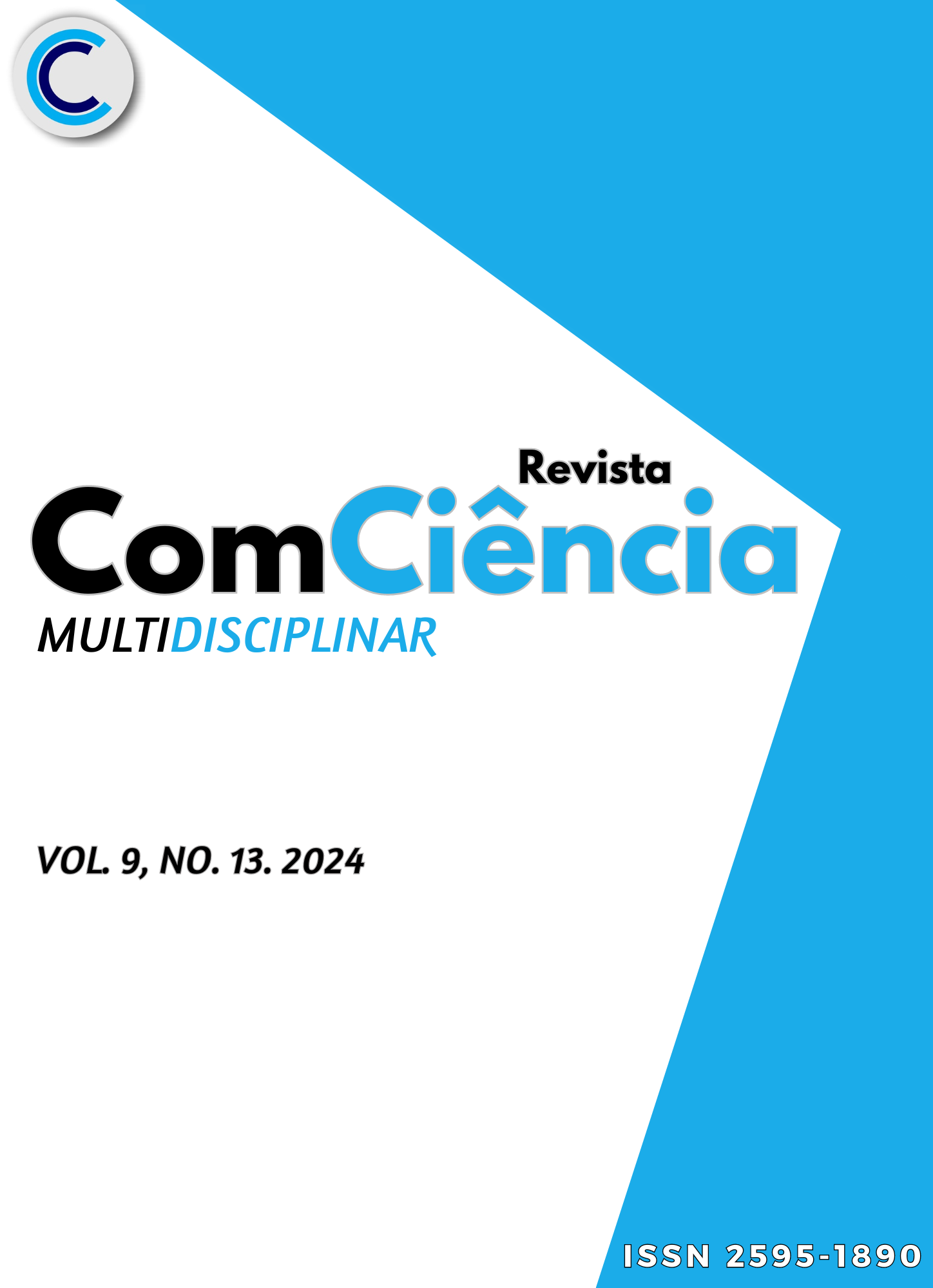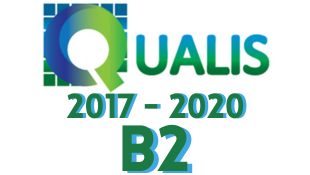INCLUSÃO DE ALUNOS COM DEFICIÊNCIA NA REDE FEDERAL EPT: INFRAESTRUTURA, TECNOLOGIA ASSISTIVA E MATERIAIS DIDÁTICOS
DOI:
https://doi.org/10.36112/issn2595-1890.v9.i13.e9132411Keywords:
Accessibility, Special Education, School Inclusion, Assistive Technology, DiagnosisAbstract
Law 13.146/15 advanced the legal protection for people with disabilities in Brazil, guaranteeing them legal protection. However, the inclusion of these individuals, especially in education, still faces challenges such as ableism, which perpetuates social and educational exclusion. This situation is exacerbated by the lack of accessibility in educational institutions, the absence of accessible didactic-pedagogical materials (ADPM), and the scarcity or lack of resources and services for assistive technology (AT). According to Decree 10.645 (Brazil, 2021), AT is essential for autonomy and inclusion, offering solutions tailored to the specific needs of people with disabilities. Additionally, ADPM are also crucial, as stated by the Ministry of Education and Culture of Brazil (MEC/Seesp, 2000), to meet the special educational needs of students and facilitate their learning. This study investigated the availability of AT and ADPM in the Federal Network of Professional and Technological Education in Brazil, using a qualitative, exploratory, and descriptive methodology. The study involved members of the Centers for Assistance to People with Specific Needs (Napnes) and other professionals involved in inclusion. The results showed a significant lack of AT and ADPM resources, compounded by the lack of qualified professionals and financial resources. Thus, the improvement suggestions include creating positions for specialized professionals, continuous training, increased investment in AT and ADPM, as well as the formation of a Management Forum for Inclusion and a National Observatory to monitor and enhance educational inclusion policies.
Downloads
References
BRASIL. Decreto n. 10645, de 11 de março de 2021. Regulamenta o Art. 75 da Lei Nº 13.146, de 6 julho de 2015, Para Dispor Sobre As Diretrizes, Os Objetivos e Os
Eixos do Plano Nacional de Tecnologia Assistiva. Brasília, DF, 11 mar. 2021. Disponível em: http://www.planalto.gov.br/ccivil_03/_ato2019-2022/2021/decreto/D10645.htm. Acesso em: 4 abril 2024.
CAST UDL. As Diretrizes UDL. 2024. Disponível em: https://udlguidelines.cast.org/. Acesso em: 24 junho 2024.
CAST UDL. Princípios Orientadores do Desenho Universal de Aprendizagem. 2011. Disponível em: http://www.udlcenter.org/sites/udlcenter.org/ files/Guidelines_2.0_Portuguese.pdf. Acesso em: 24 junho 2024.
CAST UDL. Learn About Universal Design for Learning (UDL). 2006. Disponível em: http://bookbuilder.cast.org/learn.php. Acesso em: 24 junho 2024.
COZZANI, M. V.; MILANEZ, N. Regularidades discursivas e processos de in/exclusão de pessoas com deficiência na escola. Revista Heterotópica, [S. l.], v. 4, n. 1, p. 103–120, 2022. DOI: 10.14393/HTP-v4n1-2022-63965. Disponível em: https://seer.ufu.br/index.php/RevistaHeterotopica/article/view/63965. Acesso em: 10 junho 2024.
DALFOVO, Michael Samir; LANA, Rogério Adilson; SILVEIRA, Amélia. Métodos quantitativos e qualitativos: um resgate teórico. Revista Interdisciplinar Científica Aplicada, Blumenau, v.2, n.4, p.01-13, Sem II. 2008 ISSN 1980-7031.
FDE. Fórum de Dirigentes de Ensino. Mapeamento Inclusão da Rede Federal de Educação Profissional e Tecnológica. Material Iconográfico FDE/MEC, 2022.
FALEIROS, F. et al.. USE OF VIRTUAL QUESTIONNAIRE AND DISSEMINATION AS A DATA COLLECTION STRATEGY IN SCIENTIFIC STUDIES. Texto & Contexto - Enfermagem, v. 25, n. 4, p. e3880014, 2016. DOI: 10.1590/0104-07072016003880014. Disponível em: https://www.scielo.br/j/tce/a/Hjf6ghPxk7LT78W3JBTdpjf/?lang=en.
FRANCO, M. L. P. B. Análise de conteúdo (Vol. 6). Brasília: Líber Livro, 2008.
GIL, Antônio Carlos. Métodos e técnicas de pesquisa social. 5. ed. São Paulo: Atlas, 1999.
IRM. Instituto Rodrigo Mendes. Conheca 10 materiais pedagógicos acessíveis. IRM, 2020. Disponível em: https://institutorodrigomendes.org.br/conheca-10-materiais-pedagogicos-acessiveis-desenvolvidos-por-educadores-de-itaquera-em-sao-paulo-durante-formacao-do-instituto-rodrigo-mendes/. Acesso em: 24 junho 2024.
MINISTÉRIO DA EDUCAÇÃO – MEC/SEESP. Projeto Escola Viva. Adaptações Curriculares de Grande Porte e Adaptações Curriculares de Pequeno Porte. Brasília: Ministério da Educação, Secretaria de Educação Especial, 2000.
MOTA, Paulo Henrique dos Santos e BOUSQUAT, Aylene Emilia Moraes. Deficiência: palavras, modelos e exclusão. Saúde em Debate, v. 45, n. 130, p. 847-860, 2021. Disponível em: https://doi.org/10.1590/0103-1104202113021. Acesso em: 9 junho 2024.
PEREIRA, Jaquelline Andrade; SARAIVA, Joseana Maria. Trajetória histórico social da população deficiente:: da exclusão a inclusão social. SER Social, Brasília, v. 19, n. 40, p. 168–185, 2017. DOI: 10.26512/ser_social.v19i40.14677. Disponível em: https://periodicos.unb.br/index.php/SER_Social/article/view/14677. Acesso em: 10 junho 2024.
SOARES, B. DOS S.; RIBEIRO, I. P.. A influência do capacitismo no Decreto n° 10.502/2020 e no texto da PNEE 2020. Educação e Pesquisa, [S. l.], v. 49, n. contínuo, p. e257304, 2023. DOI: https://doi.org/10.1590/S1678-4634202349257304por. Disponível em: https://www.revistas.usp.br/ep/article/view/216832. Acesso em: 12 junho 2024.
VAZ, José Murilo Calixto et al. Material Didático para Ensino de Biologia: Possibilidades de Inclusão. Revista Brasileira de Pesquisa em Educação em Ciências, [S. l.], v. 12, n. 3, p. 81–104, 2013. Disponível em: https://periodicos.ufmg.br/index.php/rbpec/article/view/4243. Acesso em: 12 junho 2024.
VENDRAMIN, Carla. Repensando mitos contemporâneos: o capacitismo. Simpósio Internacional Repensando Mitos Contemporâneos, v. 2, p. 16-25, 2019.
ZERBATO, Ana Paula; MENDES, Eniceia Gonçalves. Desenho Universal para a Aprendizagem como estratégia de inclusão escolar. Educação Unisinos, abril-junho 2018. Disponível em: https://revistas.unisinos.br/index.php/educacao/article/view/edu.2018.222.04/60746207. Acesso em: 24 junho 2024.
Downloads
Published
How to Cite
Issue
Section
License
Copyright (c) 2024 Revista ComCiência, uma Revista multidisciplinar

This work is licensed under a Creative Commons Attribution-ShareAlike 4.0 International License.





